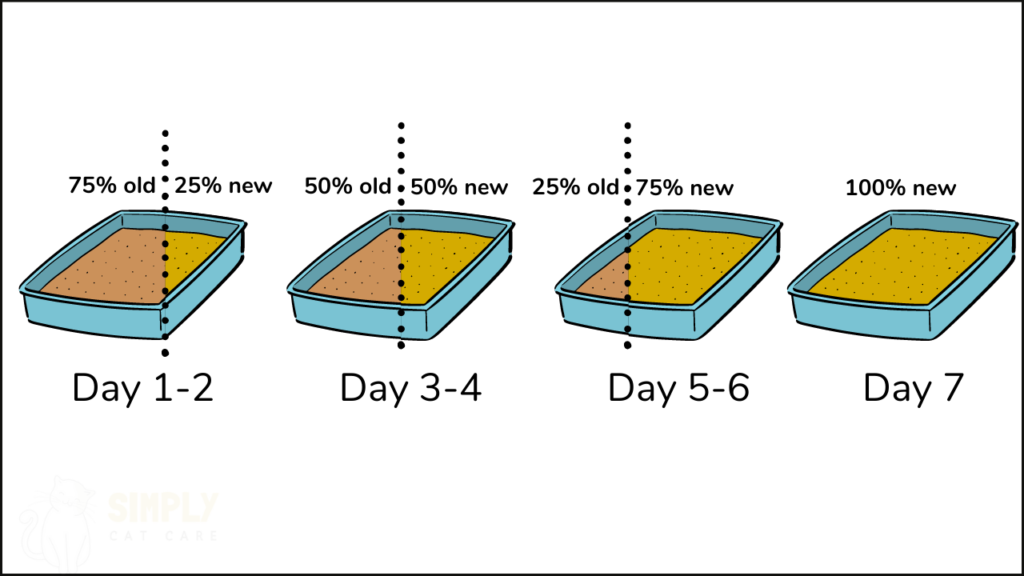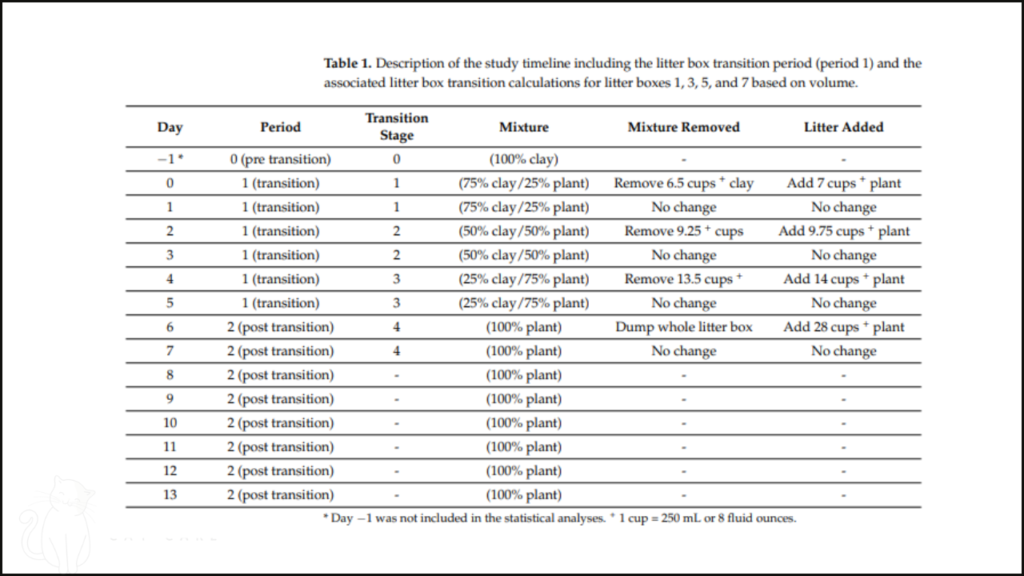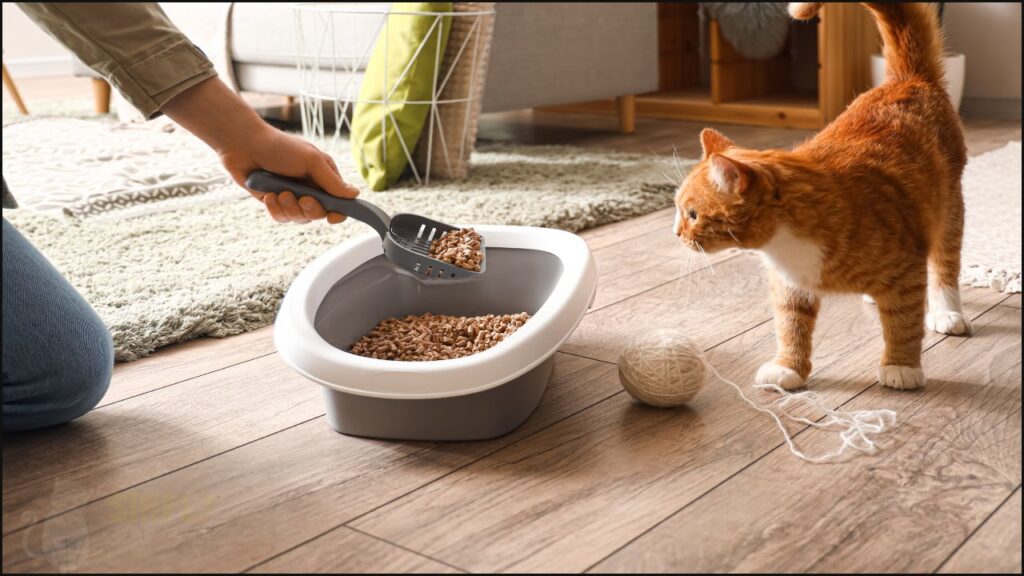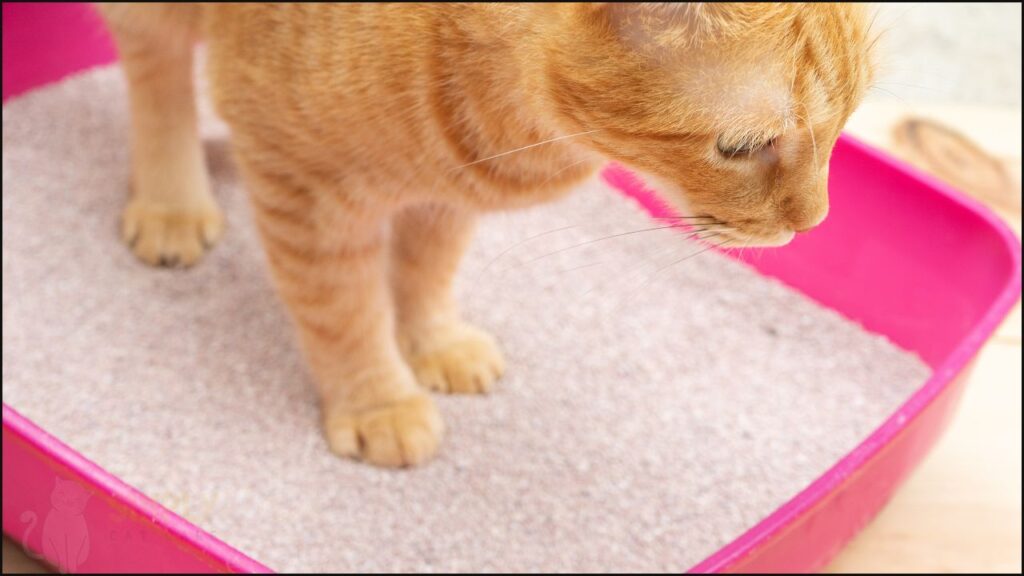How to switch cat litter step by step:
- Add 25% new to 75% old litter for 2 days
- Add 50% new to 50% old litter for 2 days
- Add 75% new to 25% old litter the 2 days
- Transition to 100% new litter
That’s it.
Litter box use is a sore spot for many cat owners. At worst, toileting issues can lead to abandonment and euthanasia.
Fortunately, there’s steps you can take to prevent things getting to that point.
In the rest of this article, I’ll go through in more detail about transitioning cat litter and things to watch for.
Finally, I’ll go through frequently asked questions on the topic of changing litter.
Sound good?
I recommend seeking the advice of a vet for any further questions. The advice in this article is not intended as medical advice.
How to Switch Cat Litter: A Closer Look
Research suggests 6 days is enough time to switch cat litter.
Add new litter gradually over time by using this time, or add more time to smooth the transition.
Use the following:
- Add 25% new to 75% old litter for 2 days
- Add 50% new to 50% old litter for 2 days
- Add 75% new to 25% old litter the 2 days
- Transition to 100% new litter

Why change litter?
Clay litter is linked to bentonite toxicosis from ingestion, which can lead to anemia in cats.
It’s also linked to human health problems including sarcoidosis.
So how do you make the switch?
Fortunately, researchers went ahead and tested out how to switch litter in 2022.
The cats were transitioned from clay to plant based litter over 6 days without difficulty.
The researchers point out that exposing cat to the new litter can help (e.g. leaving a full tray for sniffing).
Exact protocol below:

Frequently Asked Questions
Do Cats Get Upset When You Change Their Litter?
Maybe.
The only way to know if your cat isn’t happy is to watch their behavior. Cats prefer litter that’s soft and easy on the paws.
Signs your cat isn’t happy include:
- Less litter use
- Scratching outside box
- Uncovered feces
- Urinary tract infections
Keep in mind, lots of things impact on your cats litter enjoyment. This includes:
- Daily cleaning
- Scent
- Litter box size
- Location
- Other cats
- Pellet size
By transitioning litter gradually and controlling for variables, you cut down the risk of dissatisfaction.
Cleaning litter also reduces the risk of parasites.

Are Cats Picky About the Type of Litter?
Yes.
Most cats enjoy textures that are soft on the paws. Clay and crystal litter are usually preferred options due to their small size.
Fortunately, there’s natural options that are gentle on the paws and the environment.
For example, World’s Best is a corn based litter with a small size that might help ‘clay lovers’ transition.
Learn more:
How to Get Cats to Use a New Litter Box?
Tricky.
The problem with the litter box industry is they make the dang things so small.
Research finds cats prefer huge sandbox style litter trays (>81cm length), rather than the tiny rectangles.
Aside from getting a bigger tray, other strategies include:
- Changing location
- More boxes
- Cleaning daily
- Avoiding scents
If you have more than one cat, it’s best to add an additional box per cat (so called 1 + 1 rule). For example if you have 2 cats, have 3 boxes.
Cats don’t seem to have a preference for covered or uncovered litter boxes.
Learn more:

Conclusion
Steps to change litter:
- Add 25% new litter to 75% old litter for 2 days
- Add 50% new litter to 50% old litter for 2 days
- Add 75% new litter to 25% old litter the 2 days
- Transition to 100% new litter
If this doesn’t work, consider location, litter cleaning, scents, and competition with other cats.
Failing that, try another litter similar to what your cat enjoys best.
More reading:
